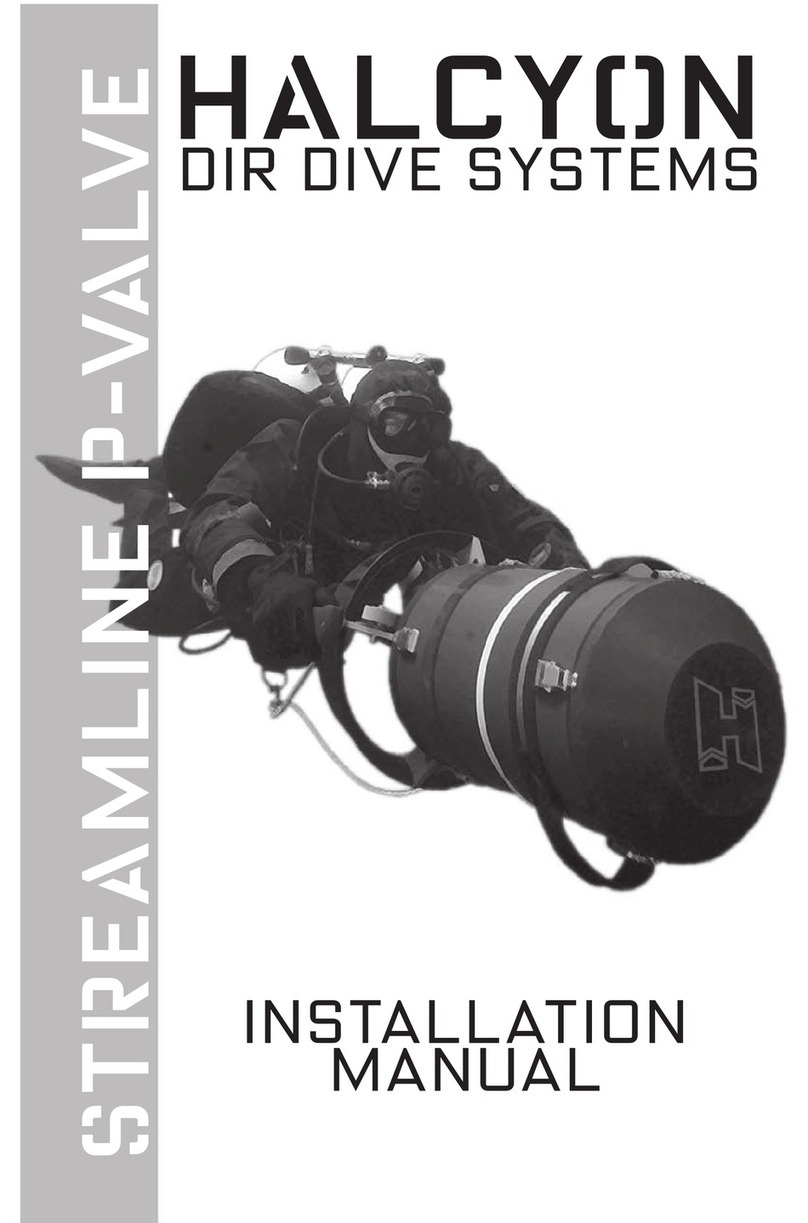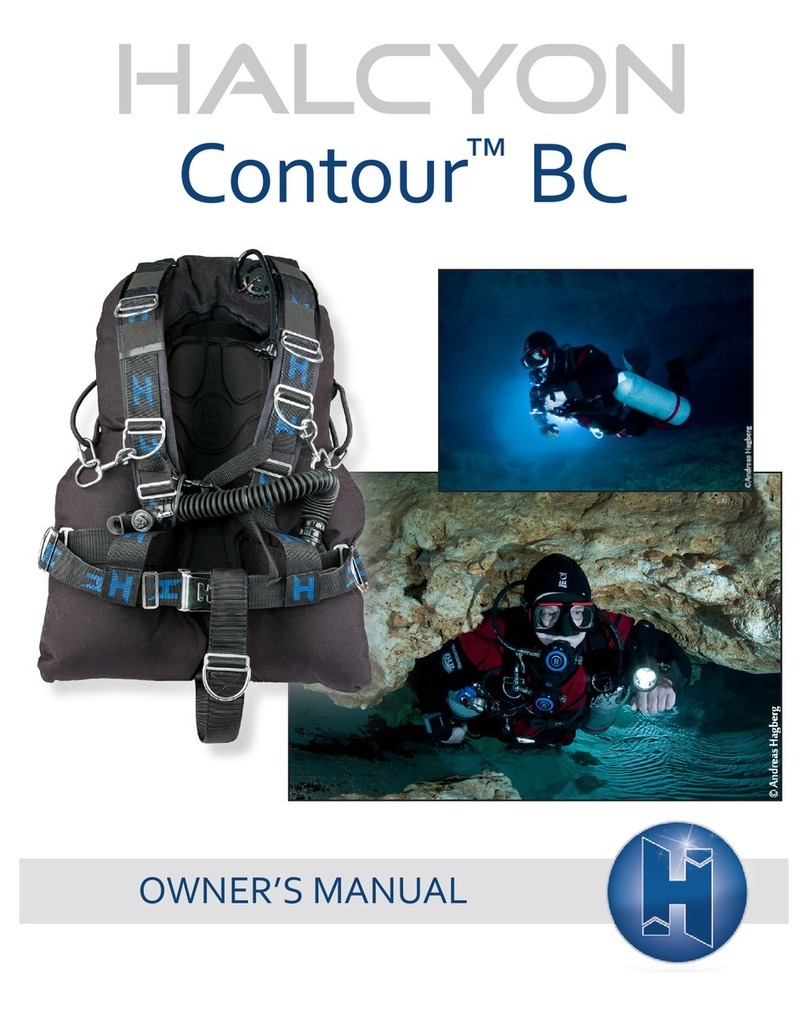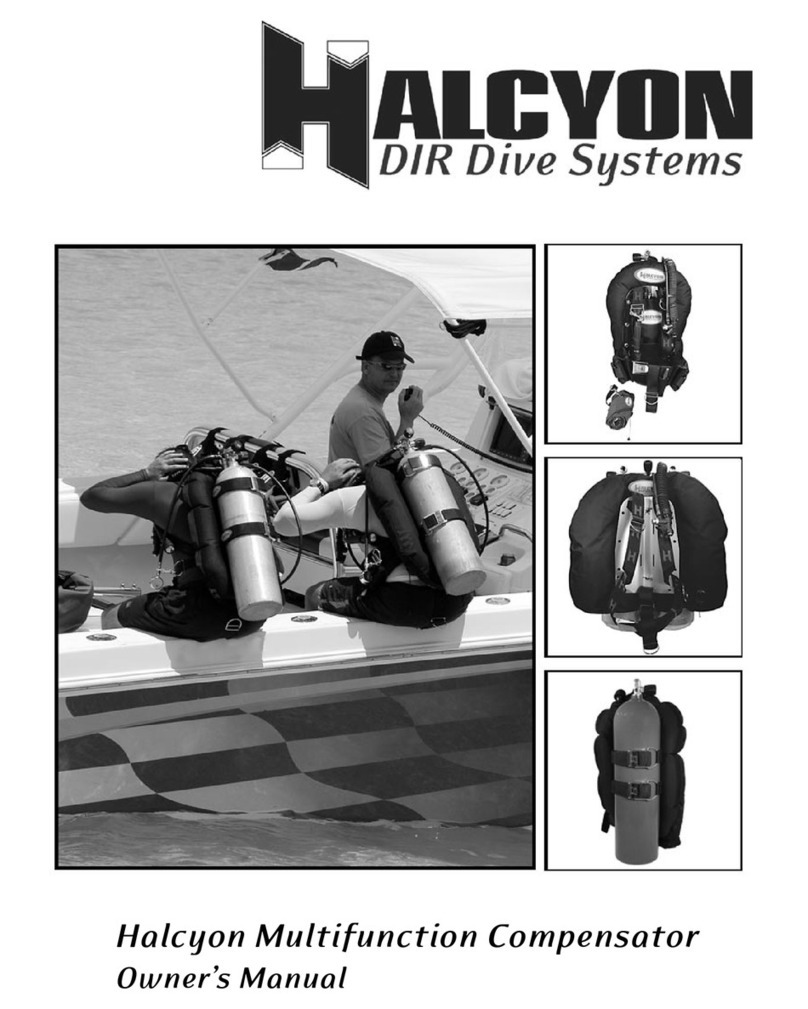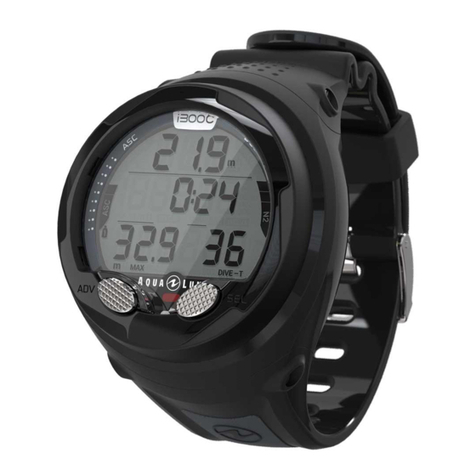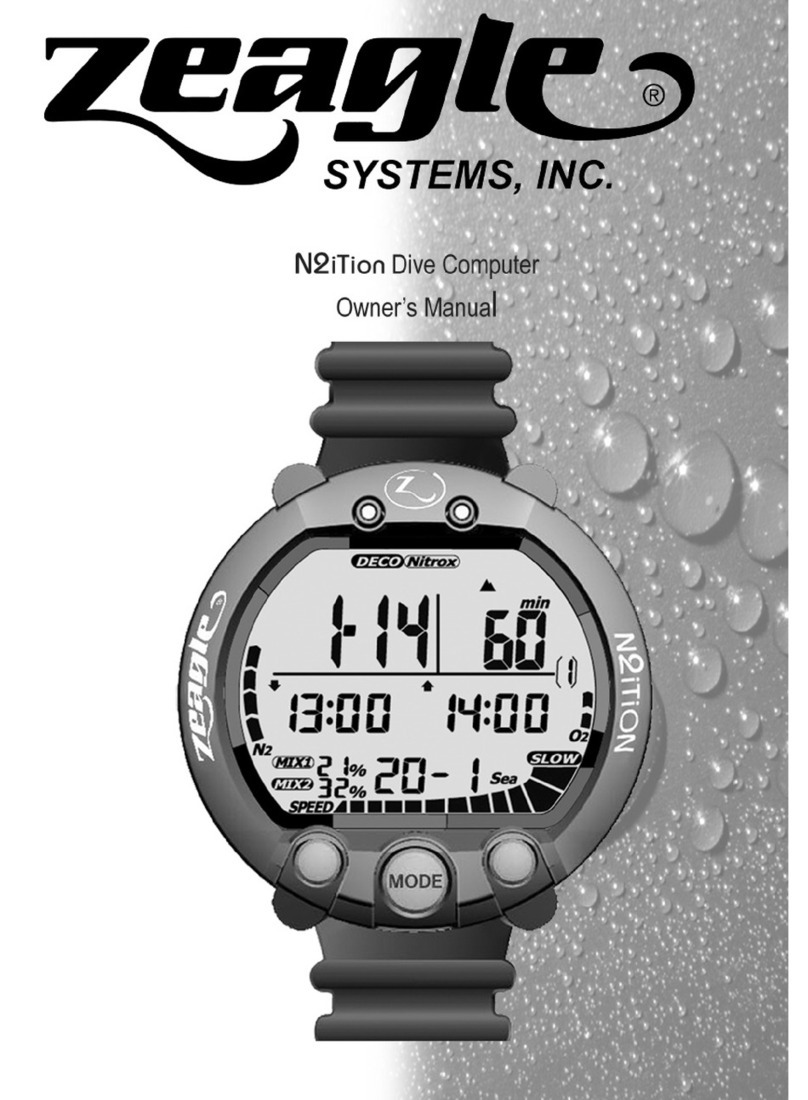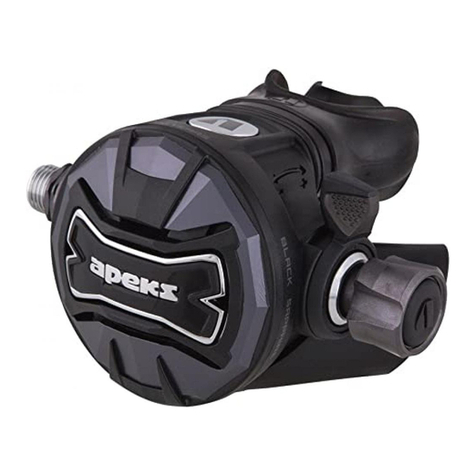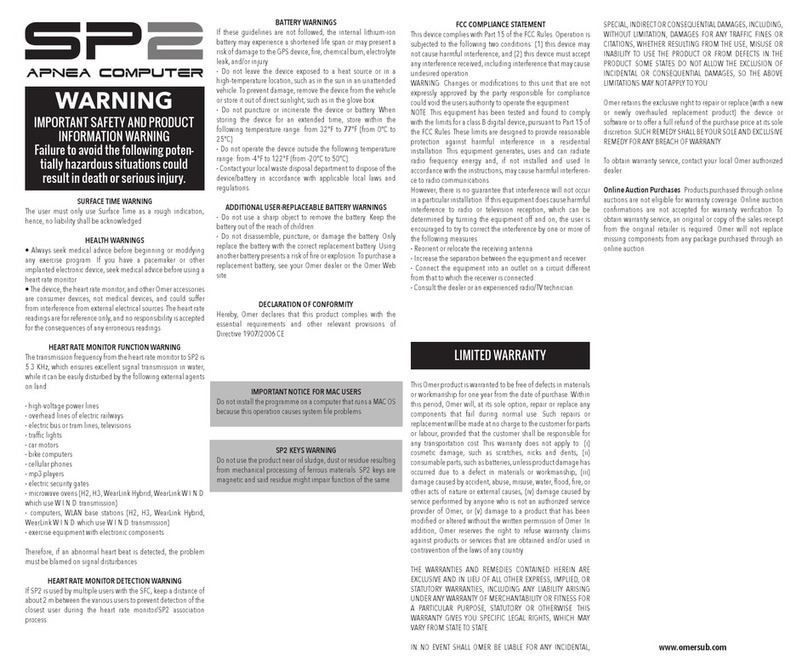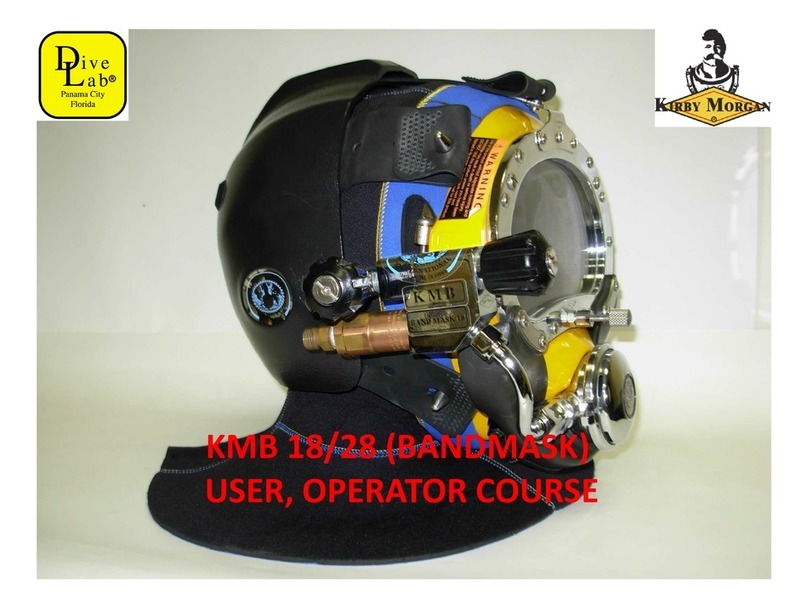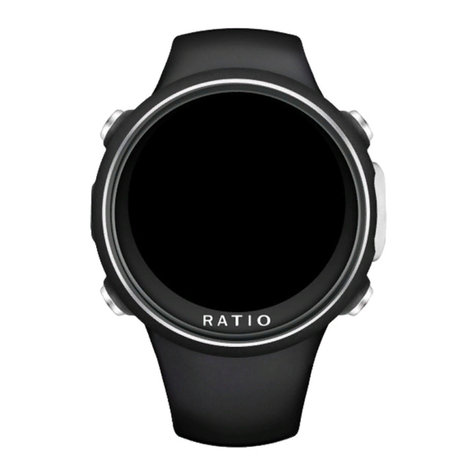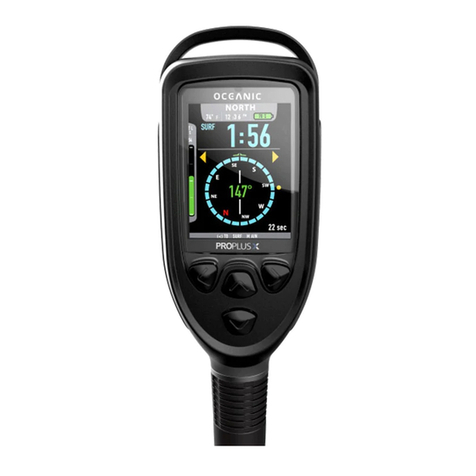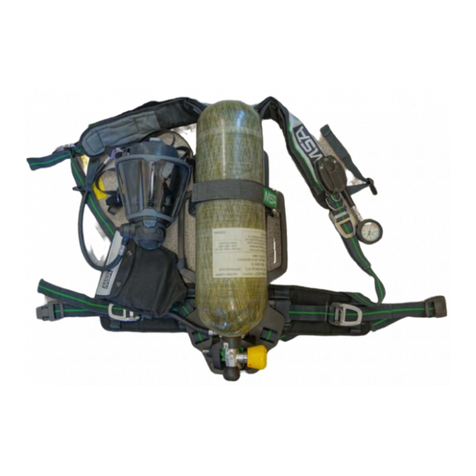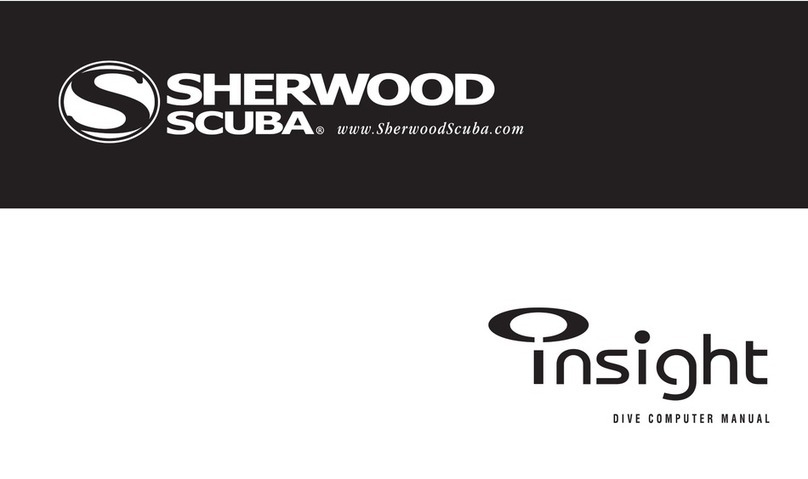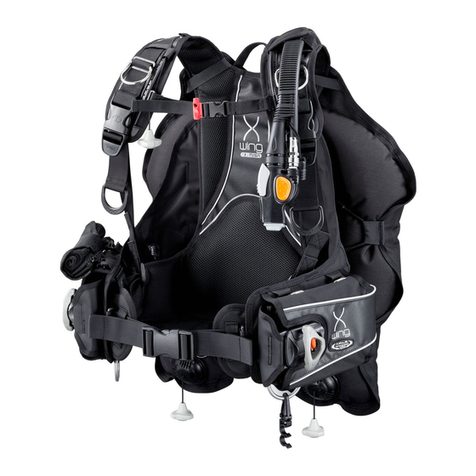Halcyon Explorer User manual

1
Primary Light systems
Halcyon
DIR Dive Systems
Explorer/Apollo/Proteus
Lighting systems manual

2
Halcyon HID & Halogen Primary Light Owner's Manual
Trademark Notice
Halcyon, Extreme Exposure, BC Keel, Multifunction Compensator, ACB, DLR,
Explorer Pro, and Scout Light are registered trademarks of Halcyon Manufac-
turing, Inc.
Warnings, Cautions and Notes
Pay special attention to information provided in warnings, cautions, and
notes accompanied by these icons:
A WARNING indicates a procedure or situation that, if not
avoided, could result in serious injury or death to the user.
A CAUTION indicates any situation or technique that could
cause damage to the product, and could subsequently result in
injury to the user.
WARNING: This manual provides essential instructions for the
proper operation, inspection, and care of your new Halcyon lighting
product. Because Halcyon's lighting systems utilize patented tech-
nology, it is very important to take the time to read these instruc-
tions in order to understand and fully enjoy the features that are
unique to your specific model.
Copyright Notice
This owner's manual is copyrighted, all rights reserved. It may not, in
whole or in part, be copied, photocopied, reproduced, translated, or
reduced to any electronic medium or machine readable form without
prior consent in writing from Halcyon Manufacturing, Inc.
©2006 Halcyon Manufacturing, Inc.
r
!
p
!
p
!

3
Halcyon Explorer, Proteus & Apollo Lighting Systems
Halcyon Lighting Overview 4
HID Lighting Systems 6
18w HID and Halogen Light Head Operation 9
10w HID Light Head Operation 11
Canister & Lid 12
Halcyon Power Systems 13
Battery Charging 14
Battery Storage 16
Burn Testing 17
Transporting 19
Troubleshooting Your Halcyon Light 19
Halcyon NiMH Battery FAQ 23
Appendex 1: System Burn Times 26
Appendex 2: Halcyon Warranty Information 26

4
Congratulations on your purchase of a Halcyon primary light. At
Halcyon we appreciate the faith your choice places in our products.
Like the rest of the Halcyon line, the Explorer, Proteus and Apollo
lights were created out of a very real need for a lighting instrument
capable of withstanding the rigorous demands of exploration diving.
Formed by some of the world's leading explorers, Halcyon is dedicated
to establishing a link between active underwater explorers and the
manufacture of precision diving equipment. Who better than leading
explorers to design and test your life support equipment? We've spent
more than a decade of careful refinement and real world testing in
developing your Halcyon light, and we are proud to count you among our
select group of demanding customers. It is an instrument that we would
not hesitate to take from the storeroom shelf directly to the water for an
exploration dive.
Every Halcyon primary light is individually inspected and pressure
tested to 300 feet/91 meters. Design prototypes are tested to
500 feet/152 meters.
Halcyon's three primary light lines meet the needs
of every level diver and every imaginable dive
environment. The Explorer line utilizes advanced NiMH
battery technology and tougher-than-steel Delrin to
produce an exploration grade system that
is the benchmark for underwater
lighting instruments. The Proteus line
incorporates traditional sealed lead-
acid batteries and high-impact polymer
canisters to create an affordable
system that is as much at home at the back of
a cave as on a Caribbean reef. Halcyon's Apollo line
of video systems provides high-power HMI and HID
illumination in combination with our indestructible

5
Delrin canisters to complete your video, film or photographic package.
Explorer, Proteus and Apollo light canisters are designed to be mounted
on a diver's waist belt, while the hands-free Goodman-style light head
allows you maximum dexterity during the dive. Manufactured from a
single piece of black Delrin, the tough Goodman-style head allows for
hands-free operation while sitting cleanly on top of the diver's hand. The
fully adjustable handle is hard-coated aluminum and can be ordered with
an optional reserve knife attached.
Lighting Systems Features
Explorer
•True sealed Delrin lid design; completely isolates battery compart-
ment from cord and light head
•Battery and lid connect with corrosion-resistant, solid-core gold-plat-
ed plugs; plugs are O-ring sealed to ensure leakproof lid
•New secure battery tray with stainless steel rods for additional pro-
tection
•Unique captured silicon switch boot integrated into new ergonomic
Delrin switch protector
•"Halcyon Blue" lid O-ring and switch boot
•Solid Delrin canisters are longer to ease the stowing of the long pri-
mary hose; water-trap in bottom of canister and raised battery tray
provide additional protection for the battery
•NiMH battery technology
•New dual-voltage 4amp charger with built-in cooling fan
•Many new features of the Explorer series are patent-pending
Proteus
•Traditional sealed lead acid batteries
•One-piece canister maintains maximum reliability
•110 or 220 volt charger
Apollo
•All of the features of our Explorer Systems
•HMI and HID light heads specifically crafted for
video, film and photographic applications
All Halcyon Lights come standard with the
following:
•Locking latches
•Stainless Steel fittings

6
•Lifetime warranty on canister
•Depth rated to 500 feet/152 meters
•Hands-free Goodman handle (except specific Apollo Video Systems)
HID Lighting Systems
High Intensity Discharge lamps produce a brilliant white light while
drawing a fraction of the power of a halogen lamp. HID has quickly
become the standard for exploration-grade lighting systems. Halcyon's
Explorer, Proteus, and Apollo lights require very little attention beyond
the care given to a halogen light. Although it produces 5% of its output
when first ignited, the HID light requires a few seconds (usually 15-20) to
produce full output. Also, if power to the lamp is lost or turned off (such
as with an underwater pluggable cord), the arc tube must cool to a given
temperature before the arc can be restruck and light produced. Halcyon
HID lights only require a brief (15-30 second) cooling period.
The ballast in an HID lighting system provides the proper starting
voltage to strike and maintain the arc, and it regulates the proper
current to the lamp once the arc is established. Ballasts are not
interchangeable among different types of HID lamps. A ballast design
incorporates electronic circuitry to provide specific lamp/ballast
operating characteristics.
Halcyon uses original Welch-Allyn SolarcTM lamps in all of our HID
products. Solarc lamps are consistent in quality and color temperature;
they produce a much higher quality of beam than any other HID that
we've tested. There are no other HID lamps which combine these features
and serve the dive light market. With adequate care as outlined in this
manual, your HID lamp should last approximately 1000 hours.

7
Special Considerations for HID Lighting Systems
The light emitted from the HID arc tube is intense and appropriate
safety precautions relating to exposure protection are required. Metal
halide bulbs operate at very high temperatures and pressures. The glass
lamps should be handled with care giving special attention to the quartz
arc tube. The Halcyon HID light is a DC lamp; proper electrical wiring
polarity must be observed to prevent damage to the lamp. Only certified
Halcyon repair technicians are authorized to work on Halcyon products;
non-certified work voids your Halcyon warranty.
CAUTION: Ultraviolet, visible and infrared radiation is emitted from
metal halide lamps. Possible skin or eye irritation can result from
exposures exceeding 15 minutes. Do not stare at exposed lamp in
operation. During operation, the bulb should be enclosed in a housing
to prevent injury. Do not remove bulb from equipment until it has
cooled. Never handle the bulb when it is operating. Keep your face
away from the light head during ignition and operation.
Protect the quartz arc tube when handling the
lamp. Keep the arc lamp clean. Do not touch the
quartz tube, the inside surface of the reflector and
the connecting wires. Contamination can degrade
lamp performance or cause premature failures. If
necessary, clean the lamp by wiping with a lint-
free towel or swab immersed in denatured alcohol.
Any interaction with the bulb should be conducted
very carefully. Bulbs break easily when handled
improperly and are not covered by warranty.
While HID bulbs last considerably longer than
halogen bulbs, you should be aware of several
characteristics that indicate a bulb is approaching
the end of its lifespan. Initial symptoms of end-of-
life are characterized by low light output and/or intermittent starting.
Visual signs include blackening at the ends of the arc tube and electrode
tip deterioration. Note that HID bulbs contain metals, including mercury,
that are harmful to the environment. Please be responsible in arranging
for proper disposal of an HID bulb.
The bulb and ballast are sensitive to external operating temperature.
Although Halcyon's HID light doesn't generate the amount of heat of a
halogen light, it should be treated like any other dive light. The HID lamp
should only be operated while in the water, to provide proper cooling for
the lamp assembly. While transporting your HID light, please don't leave
the light in direct sunlight or in a car's interior on a hot day.
18 watt HID Bulb
r
!

8
18 watt HID Light Head
Halcyon's workhorse light, the 18 watt HID, allows full adjustability
and easy bulb changes in a conventional test tube style design. Light
output is similar to a 75 watt halogen light at a fraction of the power
consumption. Halcyon 18W HID lights include our exclusive ultra-bright
reflector. We’ve designed the parabola of the reflector specifically for
diving applications, where a sharp spot is beneficial for signaling. The
surface is spun and polished to our specifications and will not chip
or flake like can happen with metal film vacuum-coated reflectors.
Combined with the extended protective cowling on our light head, the
Helios 18W lights throw out an intensely focused beam of bright, white
light that you can rely on in the most challenging of situations.
10 watt HID Light Heads
Where innovation meets practicality: Halcyon's fully-closed focusable
light head (patent pending) can be adjusted from a laser-like beam
to a diffuse soft light with the mere twist of a dial. The light head is
fully focusable by turning the
integrated knob on the back of the
light head. This unique and simple
design allows for quick focusing
and eliminates the need for an
external lock-down screw. The
entire range of focus requires less
than 1.5 revolutions.
Halcyon’s fixed-beam 10w option
provides the power of a 10w light
in a very rugged and compact
package. The fixed-beam light is
designed around an MR-11 HID
bulb that burns bright and white
with a six-degree spot.
Halogen Light Head
Conventional halogen systems utilize a filament similar to that found in
conventional light bulbs. Halogen lights have a color temperature that
is considerably lower than HID (shifting the visually perceived color
toward yellow-orange); halogen lights also have less penetration in the
water column and a much shorter burn time than a HID lamp with the
same battery pack. To their benefit, halogen bulbs are less expensive and
easily replaced with bulbs available at traditional lighting supply stores.

9
Video Light heads
Halcyon's Apollo series are available with dual/single lamp HID and HMI
light heads. Dual head Apollo systems are ready for mounting on housing
arms with standard hardware. The HMI lamp is truly an underwater
motion picture studio lighting instrument, with the output of a 1,000
watt halogen burning at a solid 5,600K.
18 watt HID & Halogen Light Head Operation
The one-piece machined Delrin slug is temperature resistant and
completely non-corrosive. The slug assembly consists of a bulb socket,
bulb, test tube and cord. The bulb slug contains three O-rings. The two
O-rings closest to the bulb actually provide the water-tight seal while the
base ring cushions the glass tube.
The focus of your light may be set by loosening the locking screw on
the Goodman Light head and moving the bulb slug assembly backward
or forward in the light head. To avoid the potential of breaking the bulb
covering, be careful not to tighten the screw down on the glass tube. The
focus should be set so that the beam forms a tight circle several feet in
front of you, allowing for brightest illumination and more convenient
signaling to one's dive buddy.
Never leave your light on while at the surface! Without the dissipating
effect of the water, the heat generated by
the bulb can accumulate in the light head,
damaging the assembly's components. With
a halogen light, the heat accumulation may
result in a catastrophic failure; although HID
lights do burn cooler than halogen, they can
eventually generate enough heat to damage
the light head given a long enough burn out
of the water.
Should the bulb assembly become difficult
to focus, make certain that the nylon
adjustment screw is loose and not binding
the assembly's movement. Dirt may become
trapped along the focusing barrel, creating
friction between the test tube and light head.
To clean the dirt from the bulb assembly,
simply loosen the locking screw and push the
bulb assembly out toward the cord. Clean the
light head and bulb assembly. Be careful not
to pull a stuck assembly out by the cord while underwater as the tube
may come free from the assembly, flooding the light. The groove on your
light head's bulb assembly will prevent the unit from being accidentally

10
pulled out from the light head by an entangled cord.
Should the bulb in your Halcyon 18 watt HID or halogen light become
damaged, it can be easily replaced by following these simple steps:
1. Remove the Goodman handle and reflector assembly from the light
head.
2. Carefully remove the lamp cover (test tube) from the slug assembly.
Pull the cover straight off; a twisting action is more likely to break
the glass tube. It is advisable to use a protective barrier such as a rag
to protect your hand from a possible break in the glass lamp cover. Be
especially careful with the 18 watt HID lamp; the bulb is quite long and
care needs to be used to prevent breaking the tip of the bulb.
3. Visually inspect the bulb and filament (halogen) or capsule (HID) for
damage. If jarred, bulbs occasionally come loose in the socket. If the
halogen filament appears intact, use a clean, oil-free rag to adjust the
position of the bulb; touching the bulb leaves natural skin oils on
the bulb and can cause uneven heating and premature failure of the
bulb. Apply a thin layer of silicone grease, like Dow Corning 111 Valve
Lubricant, to the outside edge of the base (over the serial number on
the HID bulb). Press the bulb gently into the socket, making sure that
both posts are securely seated. Check to see if the light is now working
by turning the switch on while the battery is plugged in. Do not allow
halogen lights to burn above water for more than one minute. If the
light now works, clean the assembly as discussed in step 5 and then
continue to step 6.
4. If you discover that the filament of a halogen bulb is damaged, or find
any broken parts or sections of the HID bulbs, remove the bulb from
the bulb socket. Open the package containing the new bulb. Do not
touch the new bulb with your fingers. Apply a thin layer of silicone
grease, like Dow Corning 111 Valve Lubricant, to the outside edge of
the base (over the serial number on the HID bulb). Press the bulb gen-
tly into the socket, making sure that both posts are securely seated. If
there is any doubt that the bulb may have been contaminated by your
touch, you should clean the bulb before its first use. Take a clean cloth
dipped in a small amount of rubbing/isopropyl alcohol and gently
brush off the bulb surface.
5. Wipe the bulb assembly O-rings clean with a cloth. Wipe out any mois-
ture that might have accumulated in the lamp cover.
6. After cleaning the bulb slug O-rings and the lamp cover, gently place
the glass cover over the bulb slug and push it into place. Make sure
that the lamp cover is seated all the way to the bottom O-ring on the
slug assembly.
7. Place the bulb slug assembly back into the light head, focusing the
light to a tight beam and locking down the screw. Do not allow halogen
lights to burn above water for more than one minute.
Other manuals for Explorer
1
This manual suits for next models
2
Table of contents
Other Halcyon Diving Instrument manuals
